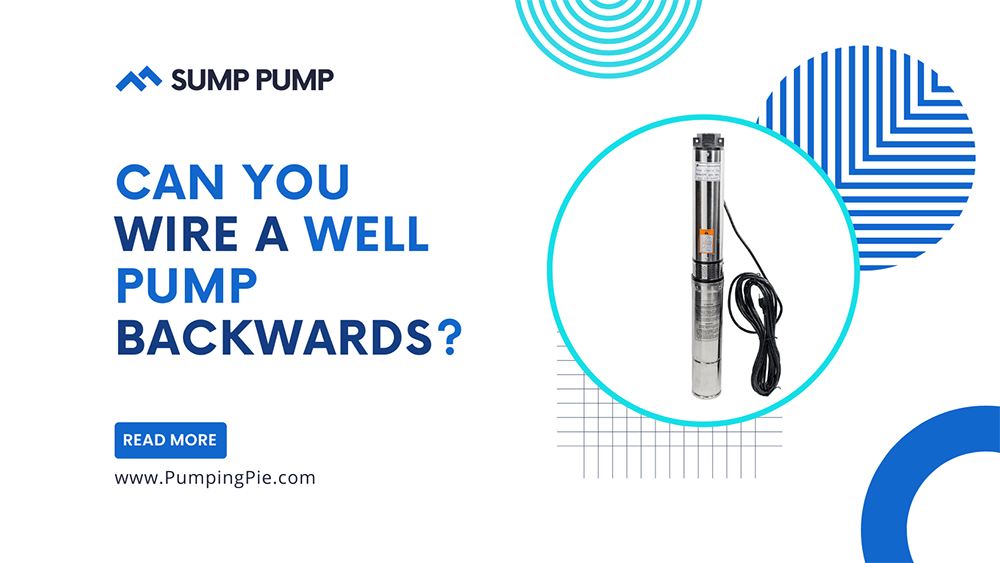Can You Wire a Well Pump Backwards?
Can you wire a well pump backwards? Well, the pump is powered by alternating current and therefore, the direction of the voltage source shouldn’t matter.
A well pump, also known as a submersible pump, is a great piece of machinery to store water in a reservoir for later purposes or suck water down from a pit to avoid any overflow of water.
In this article, we’ll find out the effects, if there are of reverse running a submersible pump and study about its basic construction. Stay tuned!
Contents
Can You Wire a Well Pump Backwards?
A well pump operates in a three-phase system. The three-line currents flowing through the rotor of the pump have an alternating flow that cuts the magnetic field lines of the stator. Hence, there’s a resulting force that enables the motor to spin and create the pumping system.
If we’re to speak theoretically, a reverse wiring well pump should act as the opposite of suction. Instead of pumping water from a low-pressure water stream to a high-pressure reservoir, it should do the opposite thing.
But, in a practical sense, if you’ve reverse-wired a well pump, there’s no drastic change in the suction process, but the flow rate seems to be slower than usual.
Wiring System of A Well Pump
Two types of wiring systems are associated with the well pump- 3 wires and 2 wires, also known as 3-phase or 2-phase submersible pumps. How do we distinguish between these two configurations?
In a 3-phase well pump, you’ll notice red, green, and blue wire as phase and an additional black wire which is mainly considered neutral. On the other hand, 2 phase well pump comes with two black wires and a green wire and you can consider anyone neutral.
Quite surprisingly, you’ll also find a single-phase well pump but they’re considered as inefficient as a three-phase system tends to supply more resistive, capacitive, and inductive load.
What is The Operating Voltage of the Well Pump?
One should also know the series of operating voltages associated with well pumps. Because driving such magnitude of voltages in reverse direction might create some accidents.
While purchasing a well pump, most customers often get puzzled with the fact about the operating voltage of the submersible pump. Your neighborhood grid should have 230-volt phase lines. If you wish to operate your pump at 230 volts, then purchase a 230 V-rated submersible pump.
On the other hand, there are other operating voltages like 110 volts, 480 volts, and so on. You’ll purchase a specific model of well pump based on your requirements.
How To Find The Direction of Well Pump Rotation?
The direction of rotation of every submersible pump is labeled at the pump’s body. Its usual direction of rotation is anticlockwise, and if you wire them backward, the rotation will shift to clockwise instead.
Now, the main question someone should ask is, “Will reverse flow damage a well pump?” Well, more operating voltage means more torque. Reverse wiring a pump will generate the same amount of torque but in a reverse direction.
As these pumps are not generally manufactured to generate such torque at reverse rotation conditions, the motor will face permanent damage if the reverse speed is greater than the normal operating speed.
FAQs
Can we make a three-phase well pump rotate backward?
A well pump will run in the reverse direction unless there’s a negative phase sequence in the balanced load system. All you need to do is cross-connect any two phases and the reverse rotation is fulfilled.
Does a well pump need a neutral wire?
Neutral wires are not specifically necessary in the case of a three-phase well pump system. In a three-phase pump, you’ll observe there are 4 wires, and you can consider any wire as neutral or ground.
How to understand the voltage rating of a well pump?
There’s a label about the voltage rating above the camshaft of every well pump. You can either check that or can contact your dealer to know the exact value.
Conclusion
Can you wire a well pump backwards? There’s no additional advantage in wiring a well pump in a reverse direction. But, if the reverse speed crosses the normal speed, the motor will get damaged, creating a hazardous situation.
Additionally, the flow rate will be slower than usual, and the pump’s lifespan will gradually decrease.
Therefore, we think a fool would want to reverse-wire a perfectly functioning well pump and push it to the path of destruction. Assuming this article will change your decision and help your pump last longer.
As an Amazon Associate, I earn from qualifying purchases.







